
7 minute read
THE MOST EPIC MULTI-DAY
CAMP LIGHT
6 CLASSIC MULTI-DAY TREKS FROM ACROSS EUROPE
The GR20 might be Europe’s hardest multi-day camping trip, but it’s far from the only one worthy of your attention. As in the UK, wild camping is forbidden in much of the Alps. But there are plenty of other treks on the continent which you can tackle with a tent.
HARDANGERVIDDA TRAVERSE, NORWAY 97km / 12 DAYS
Roughly equidistant between Oslo and Bergen, the vast, rugged expanse of the Hardangervidda plateau is one of Europe’s largest wildernesses. At 10,000 square kilometres, the wild area is larger than Yellowstone in the US, and while only a third of it is technically protected, it’s so empty that it’s hard to know where the National Park begins and ends.
There are plenty of popular day hikes, and well signposted hut-to-hut itineraries, but if you really want to experience the best of this bleak, sub-Arctic landscape, we recommend taking advantage of Norway’s permissive wild camping laws, and traversing across the entire plateau - beginning and ending at Rallarvegen. While water is plentiful, trees are non-existent at this altitude / latitude, so sheltered camping spots can be tricky to fi nd. The feeling of being completely alone, however, is almost impossible to beat.


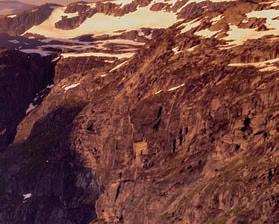




A week might seem a long time to complete an 80km trail, but the Fagaras Mountains Traverse involves some 7,500m of ascent, some of which involves a certain amount of scrambling. Located in the Carpathians of central Romania, this sub-range includes several peaks over 2,500m, including Romania’s highest, Moldoveanu.
It’s one of the most dramatic areas of the country in terms of scenery, full of steep-sided crags, and precipitous north faces, and also one of the wildest - you can fi nd brown bears and wolves in these hills. The normal route runs East to West, starting from the Bârsa river about an hour west of Braşov, and fi nishes at the Turnu Roșu monastery. There is a network of well-maintained mountain huts in these hills, which can be booked along the route. But for the full wilderness experience, we’d recommend wild camping, which is completely legal in Romania. Just watch out for those bears.


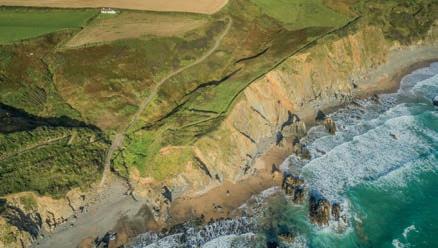
PEMBROKESHIRE COASTAL PATH, WALES 299km / 10-15 DAYS
Snaking around the southwest coast of Wales, the Pembrokeshire Coastal Path is a bona-fi de British classic. For much of its 300km route, the path cleaves to the top of precipitous cliff s, just a few metres from the edge. But it also takes in more gentle coastal landscapes, from rolling sandstone bays, to volcanic headlands, pristine beaches, and u-shaped glacial valleys. Many people tackle it in sections, but there’s something special about doing the whole thing at once - not least the fact that it involves around 10,000m of climbing, more than Mount Everest.
Of course, with some notable exceptions (ie. Dartmoor), wild camping is banned in the UK south of the Scottish border. But there are plenty of campsites along this route, and while you could opt to stay in hostels or hotels, taking a tent would defi nitely be our preferred option. The route is long, but none of the terrain is particularly hard going, so completing it in 10 days is defi nitely doable if you’re fi t. However, if you can aff ord to take longer, and linger over certain sections, we’d recommend it. If you catch sight of dolphins, whales or porpoises out in the Irish Sea (a relatively common occurrence) the last thing you’ll want to do is rush off .
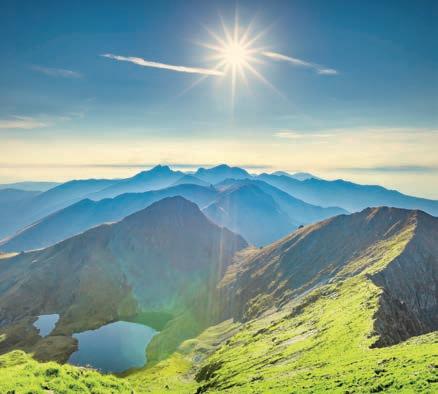
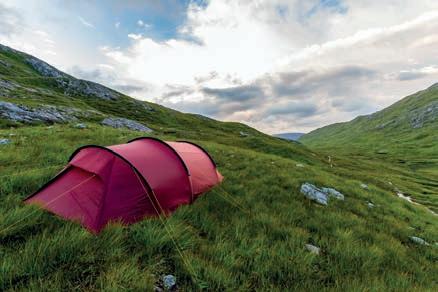

CAPE WRATH TRAIL, SCOTLAND 250km / 2-3 WEEKS
Arguably the toughest long distance hike in the UK, this is also (according to those few who’ve completed it) one of the most rewarding. Starting in Fort William, the walk takes you all the way up the West Coast of mainland Scotland to the most north-westerly point, Cape Wrath.
There’s no offi cial route or marked trail, so excellent navigational skills are a must. There are guide books, however, notably from Cicerone. This recommends breaking the trail down into 14 segments which require anything from 5 to 11 hours hiking per day - a daunting challenge.
The route takes you through some of the most stunning - but least-populated - areas in the whole of the UK. Cape Wrath itself is reachable only by walking through the bogs north of Kinlochbervie (the last leg of the trail) or by sea. When you get there, you have to hope that John, the lighthouse keeper, is running his twice-daily boat trips across the Kyle of Durness to the nearest bus-connected village. If the waves are too big, or he’s had one dram too many, it’s a long walk back out.
PEAKS OF THE BALKANS TRAIL, ALBANIA, MONTENEGRO & KOSOVO 192km / 10-12 DAYS
An epic transnational trail that takes in some of Eastern Europe’s most dramatic mountains, the Peaks of the Balkans was fi rst established as a way to bring some much needed tourism income into a region still suff ering from the after-eff ects of a brutal war. Given its troubled history, it might seem appropriate that the range which straddles this border region is known as the Accursed Mountains, but once you get into them and start hiking, you’ll fi nd they are anything but. Craggy cliff s, plunging gorges, and stunning mountain lakes abound, and there’s an abundance of wildlife too - golden eagles, lynx, chamois and even wolves and bears. You can start the circular route from any of the three countries in Theth or Valbonë, (Albania), Pejë (Kosovo), or Plav (Montenegro), or attempt it in sections.
KERRY WAY, IRELAND 200km / 8-10 DAYS
Ireland is one of those wonderful countries where wild camping is generally permitted, and the stunning scenery of the West Coast makes it a brilliant place for multi-day treks. County Kerry is home to some of the Emerald Isle’s most dramatic landscapes, as well as its highest mountains. Designed to be relatively accessible, despite its length, the Kerry Way mostly steers clear of the tops, but it’s easy enough to divert from the offi cially marked route and make the day trip up Carrauntoohil, Ireland’s highest mountain, should you wish.
Starting in Killarney, the looped trail runs along the shores of Lough Leane, straight into the Killarney National Park, and some of the most remote areas of the country. You can take in the romantic ruins of Ballycarbery Castle and the Glenbeigh Towers Castle as you head around the coast, before turning back inland. Along the way, you’ll fi nd some of Ireland’s cosiest pubs.

ULTIMATE LIGHTWEIGHT TENTS
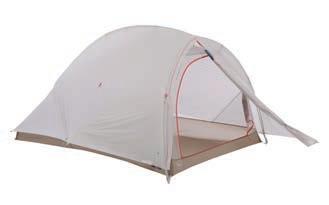
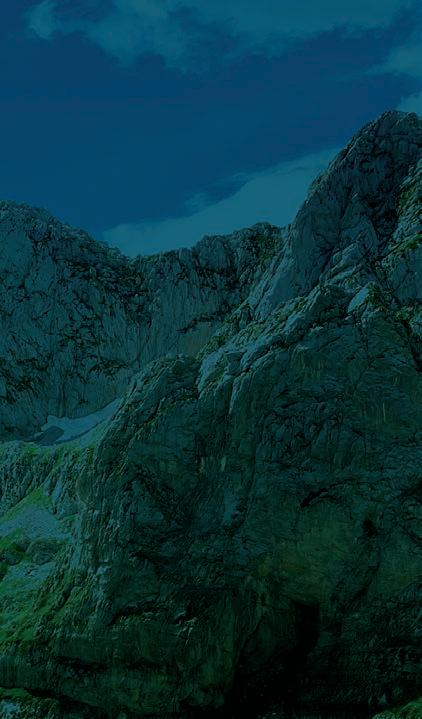
BIG AGNES FLY CREEK HV UL2 • £375 • 879g
Founded by self-professed gear nerds from Colorado, Big Agnes take their name from “a truck drivin’ mountain mama that we know and love”. This is their lightest, 3-season, doublewalled, 2-person tent. It packs down to 50x15cm.
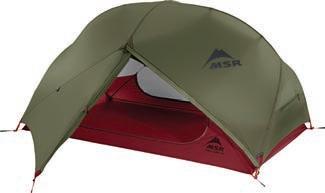
MSR HUBBA HUBBA NX • £455 • 1540g

An ultralight, two-person tent, this packs down to just 46x15cm. It features a 20 denier nylon ripstop fl ysheet with a 1.2k hydrostatic head - more than enough for 3 season camping. Its unique pole arrangement maximises headroom.

VANGO F10 HYDROGEN AIR • £600 • 580g

A twinskin, single-person tent, this pushes the boundaries of superlight design. The single pole is replaced by an ‘AirBeam’, which you infl ate with a bike pump. It packs down tiny (20x10cm) and the fabric boasts a 2k hydrostatic head.





